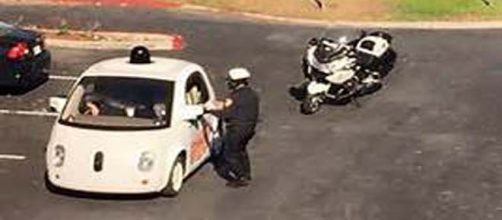Police give out traffic tickets on a daily basis, however, on Thursday, California police in Mountain View made a traffic stop involving a Google driverless car for going too slow, causing a traffic jam.
The Google driverless car is a test vehicle being deployed in several locations and has logged more than a million miles on the road. The car was stopped because it was going 24 miles per hour in a 35 mile per hour area.
Police learn about how Google driverless car operates
The police officer stopped the vehicle and asked questions about how the vehicle is able to operate, drive and choose its speed, as well as to explain to operators how the car affects other traffic.
The Google cars are permitted under the state vehicle code to drive on streets with a speed limit of 35 miles per hour or under.
When a Google autonomous car is on the road, there are actually two people inside that can take over the driving duties if needed, and in this case one of them took over the wheel so that the traffic situation could be resolved, said the police officer in charge of the traffic stop. The operators were told that in the future, if Google's new vehicle causes traffic issues that they need to pull over and let traffic go by just as if they were any other car having an issue of some sort. This time they didn’t receive a ticket.
Google cars must follow the road rules
Google’s autonomous cars are programmed to obey the rules of the road, but the company says that one of the challenges of automated vehicles is finding a way to blend the Google driverless car in with other vehicles on the road.
This is especially true since many live drivers don’t always follow or obey traffic rules.
The Google automatic cars have been involved in 16 auto accidents since they started being tested in 2009. These were all said to be caused by some sort of human error, and were not the fault of the driverless car’s programming. Google officials say that their Google driverless car is kept at 25 miles per hour or less due to safety reasons, and that they want people to feel like they can approach them to ask questions.

